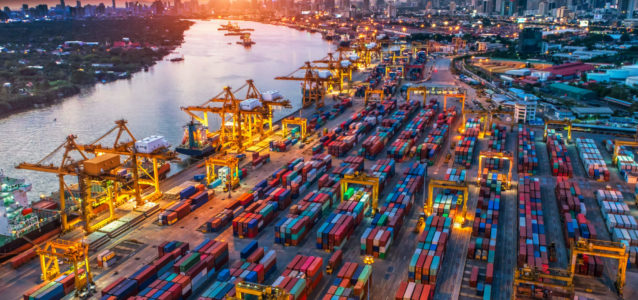Previously we highlighted the “Classification and Shipping of Hazardous Goods” to stress that not only are hazardous good classified in nine tiers, but also they should be duly labelled for transit accordingly. The AITA has set regulations that make shipment of hazardous goods over air travel tricky if your cargo is on the list of dangerous goods. Thus, sea cargo of hazardous goods is the inevitable choice but still poses many risks that should be explicitly understood. In this edition of the Transco Cargo Blog, we look at the particulars to keep in mind when sending sea cargo of hazardous goods.
Guidelines for Packing when Sending Sea Cargo of Hazardous Goods
We cannot stress this enough, that when sending sea cargo of hazardous goods, it needs to be properly packed. Packing the sea cargo contents well is a critical factor to ensure safe passage between origin point to delivery. Whist cargo damages are part and parcel of shipping when contents are not packaged properly and they move around during transit, it poses more of a risk when it concerns the transit of hazardous goods. It’s vital that the cargo is packed properly, to ensure no leakages or ability of spilling over. The use of cushioning materials or lashing items so that the cargo doesn’t move within the box or crate is extremely important too. If there are any damages or leakages within your cargo, your entire shipment may be delayed.
It is also important to note that if you are transporting hazardous and non-hazardous goods, it should all be packed well, braced in the container, and secured safely for transport. As we mentioned in our prior blog article, the hazardous goods should be placed closer to the doors for faster removal.
Extra Handling Fees
It is very possible that due to the risk involved, there will be extra handling fees associated with sending sea cargo of hazardous goods. Insurance related to these goods have also risen, and it is possible that you will be asked to pay for it.
Completing Documentation Accurately
Documentation is a vital component in any shipment, however when it concerns shipments of hazardous goods in question, it is a critical element. One of the first things is to ensure that you have declared your hazardous goods in the commercial invoice. There are also other documents that need to be taken care of when sending hazardous goods which include the likes of Material Safety Data Sheet (MSDS), Dangerous goods request, dangerous goods declaration, dangerous manifest, Transport Emergency Card or TREM Card.
Let us at Transco Cargo handle these for you. Follow the link for more information on Restricted Items.

